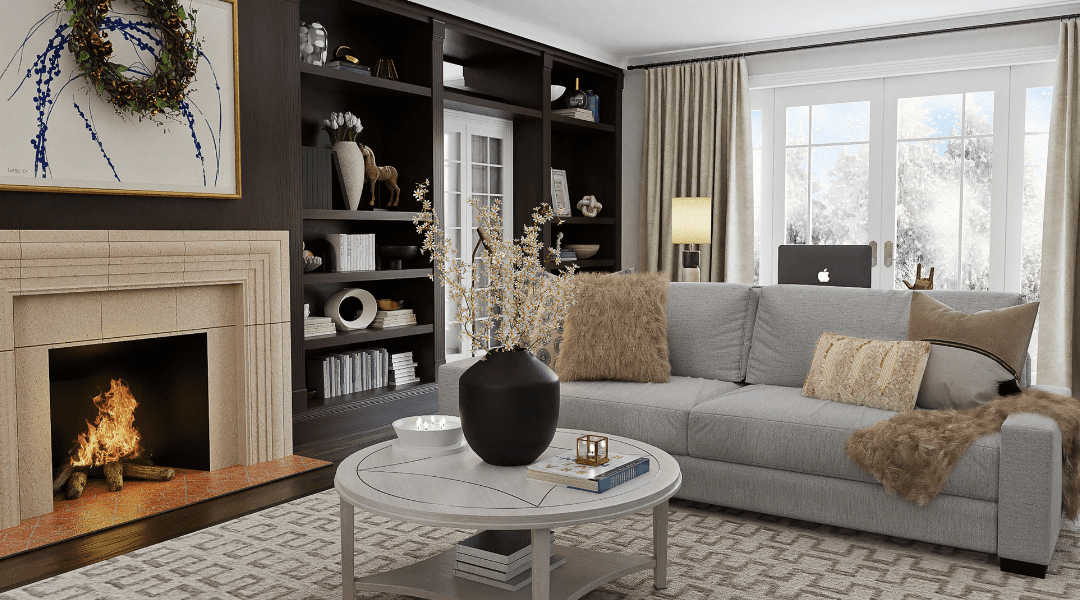Interior design is synonymous with beautiful spaces, right? But we’re not just talking about creating beautiful spaces today. No, we’re exploring something much, much deeper—the profound impact of interior design on your mood and overall well-being.
This is a topic I feel incredibly passionate about. This is the reason I left my corporate career to start Daakor, an interior design firm on a mission to help people create homes that support and nurture them and their families. If there’s one wish I have, it is that more people realize the impact their home has on their lives.
So, buckle up ‘cause we are going to walk down a path to discover and unravel the secrets of how interior design truly affects how we feel, think and behave. It’s time to unlock the power of design and understand its direct connection to your mood.
Your surroundings have an undeniable influence on your state of mind. And interior design is the tool we use to shape and mold that environment. From the colors on the walls to how your furniture is arranged, every choice you make in designing your spaces has a profound impact on your mood. Whether you do this intentionally or not. So why not get educated on the topic and make it intentional, right?
Imagine walking into a room bathed in warm, inviting colors—a space that instantly lifts your spirits and makes you feel at ease. Or picture a beautifully lit space, with natural sunlight pouring through the windows, leaving you with a sense of serenity and rejuvenation. These elements of design are not mere coincidences; they are intentional choices that affect us on a deep, psychological level.
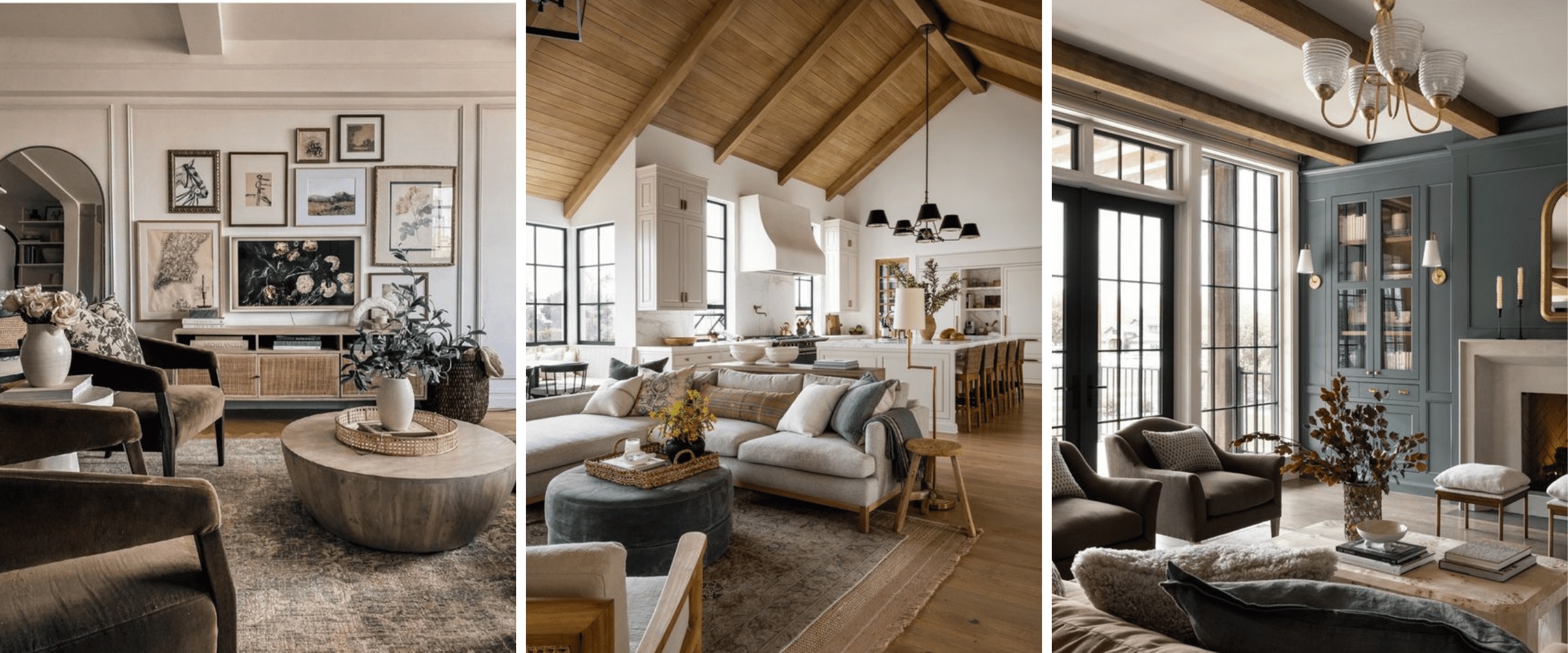
Images via Pinterest.
Colour & Your Mood
Have you ever stepped into a room and instantly felt a surge of energy or a sense of tranquility wash over you? That’s the power of color in action. Each hue carries its own unique energy and has the ability to influence your mood in profound ways.
When it comes to interior design, color is not just about aesthetics; it’s a tool we wield to create specific atmospheres and evoke specific desired emotions within a space. Warm colors like passionate reds, fiery oranges, and vibrant yellows have the remarkable ability to ignite feelings of energy, enthusiasm, and creativity. They infuse a room with a sense of vibrancy and excitement, making it an ideal choice for areas where social interactions and productivity thrive.
On the other end of the spectrum, we find cool colors—calming blues, soothing greens, and tranquil purples. These hues have a calming effect on our minds and bodies, inviting a sense of serenity, relaxation, and peace. They are perfect for spaces where we seek solace, such as bedrooms, bathrooms, and cozy reading nooks.
But the magic of color psychology doesn’t stop at individual shades. The way colors interact with one another also influences your emotional response. Harmonious color combinations can create a sense of balance and unity, while contrasting combinations add excitement and visual interest. By carefully selecting color schemes that align with your desired mood for each room, you can curate environments that support and enhance your emotional well-being.
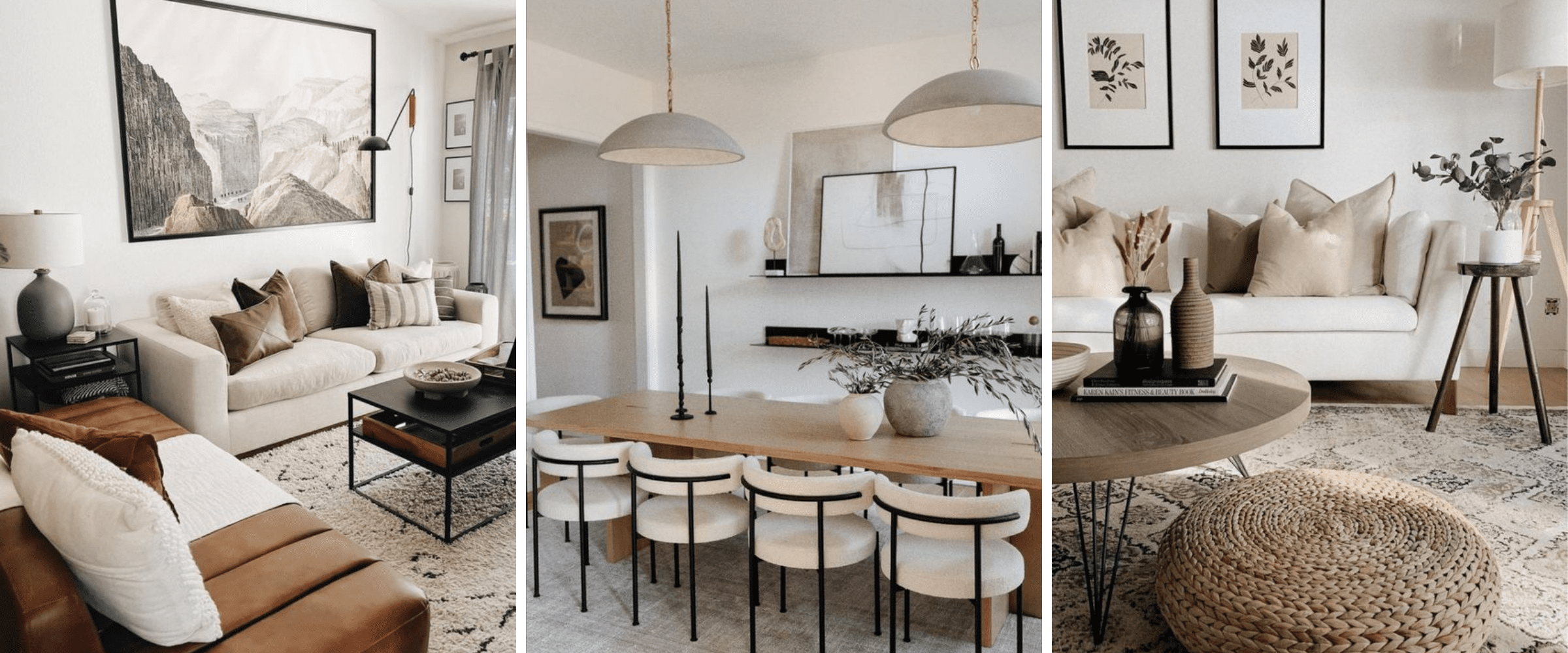
Images via Pinterest.
For instance, a vibrant kitchen bursting with warm yellows and energetic oranges can awaken your senses and inspire culinary creativity. Can you say, yum?! Meanwhile, a serene bedroom adorned in cool blues and soft greens becomes a sanctuary of calmness, promoting restful sleep and relaxation. Ahhhh…
When incorporating color into your home’s interior design, remember that personal preference plays a significant role. While color psychology provides insights into how colors generally influence your mood, it’s essential to choose colors that resonate with you personally. After all, your emotional connection to a space is what truly makes it yours.
Think about the mood you want to create in each room. Explore the vast palette of colors and their psychological effects, and don’t be afraid to experiment and trust your instincts. Whether you opt for warm, invigorating tones or cool, tranquil shades, let color be the brush with which you paint the emotional landscape of your home. Sounds a bit corny but doesn’t it paint a fantastic picture in your mind?
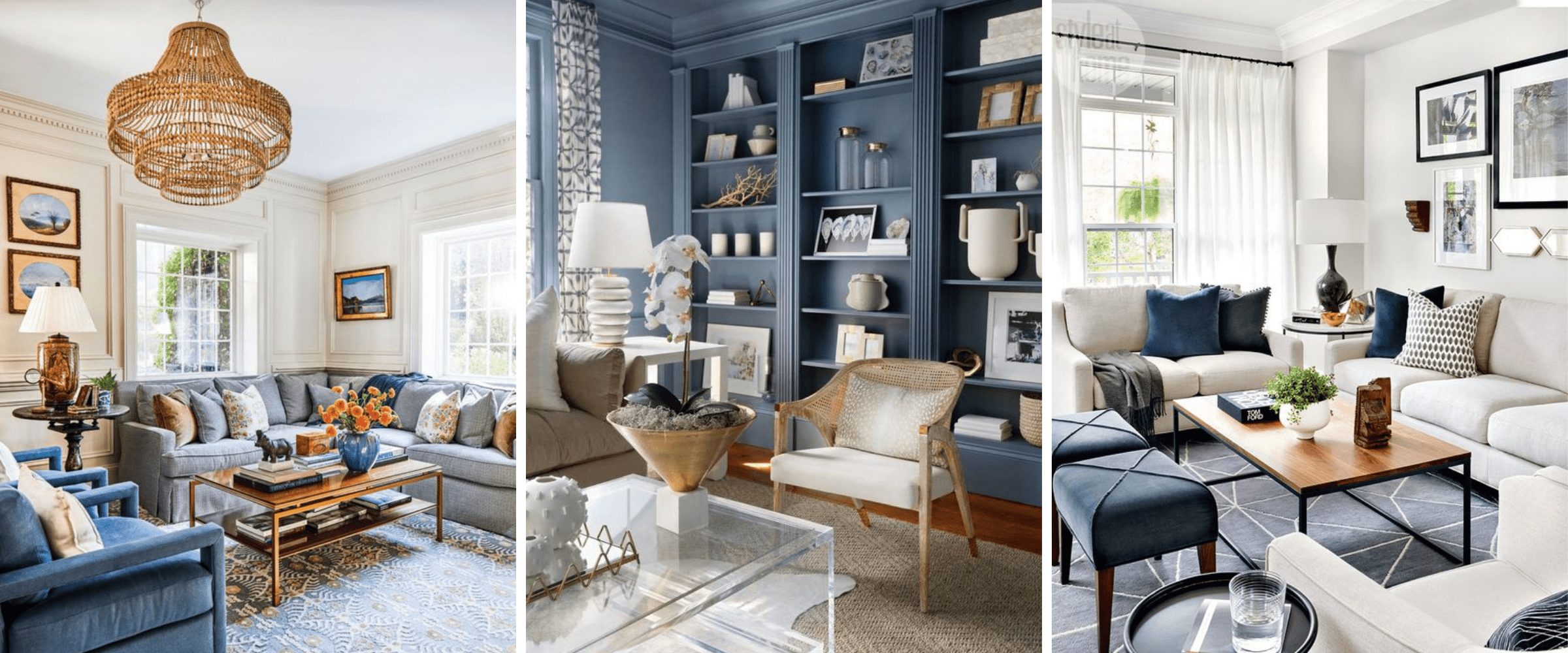
Images via Pinterest.
Lighting and Your Mood
Lighting is the enchanting dance of illumination that can instantly transform a space and shape how we feel. That makes lighting a key component of how your home’s interior design affects your mood.
Imagine stepping into a room bathed in warm, golden light that washes over you like a gentle embrace, instantly making you feel at ease. Or picture a bright, well-lit workspace that invigorates your senses and fuels your productivity.
Lighting is no ordinary aspect of interior design; it’s a powerful tool that holds the key to creating the perfect ambiance and positively impacting your emotional state.
Natural light is an absolute game-changer. You’ve probably noticed the number of times I’ve referenced natural light so far in this post! That’s not by accident.
Natural light has a profound effect on our well-being and has been scientifically proven to improve mood, enhance focus, and regulate our circadian rhythms. When sunlight pours through our windows, it bathes us in its gentle warmth, infusing us with a sense of vitality and joy. That’s why incorporating ample natural light into your living spaces is crucial.
Position your furniture strategically to allow sunlight to cascade into your rooms. Pull back the curtains, open those blinds, and let the sunshine work its magic. Not only will it uplift your spirits, but it will also create a visual connection to the outside world, bringing nature’s beauty indoors and promoting a harmonious atmosphere inside.
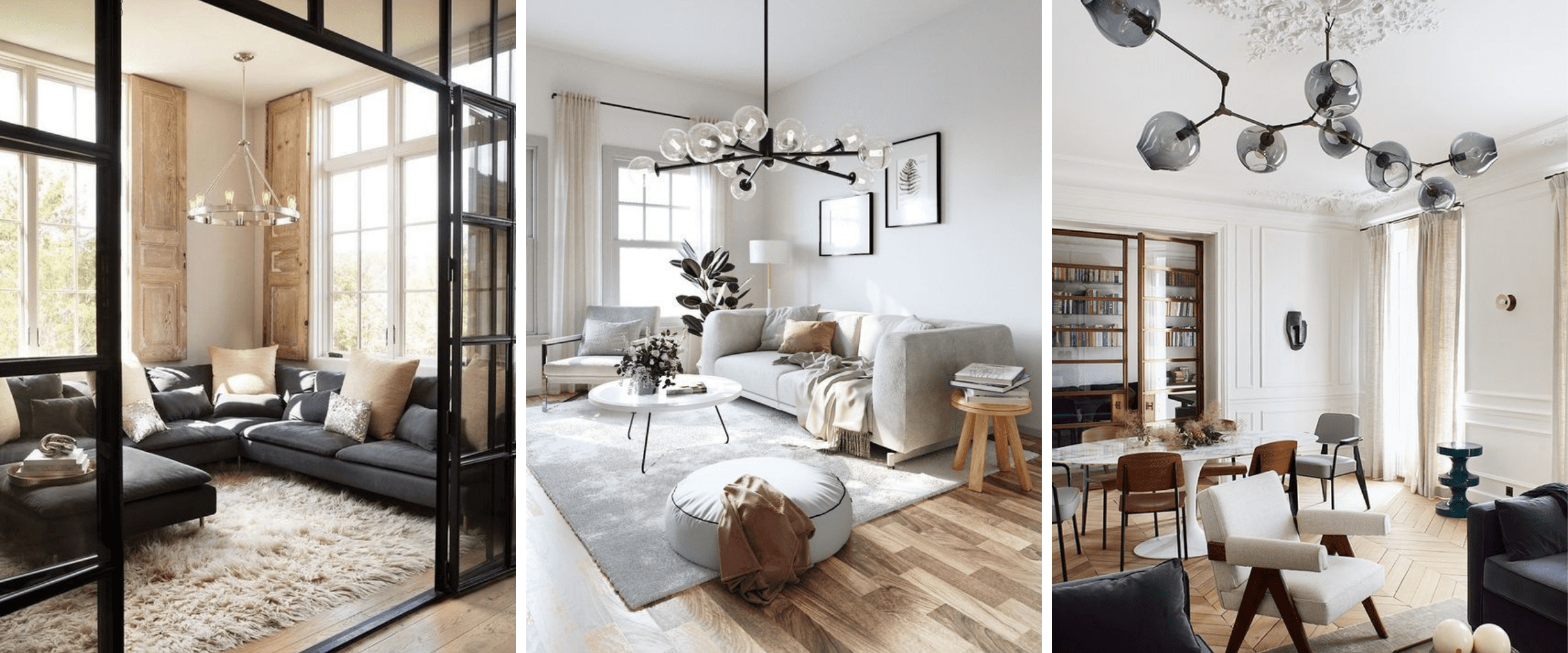
Images via Pinterest.
Just as the sun’s rays affect us, the same can be said about light coming from lamps and other light fixtures. Artificial lighting is adjustable and versatile giving you the opportunity to tailor the atmosphere of a room to suit your needs and mood.
Warm, soft lighting creates a cozy and intimate ambiance, ideal for spaces you use for relaxation and unwinding—think bedrooms, living rooms, and dining areas. On the other hand, bright, cool lighting is perfect for areas where focus and productivity take center stage, like in your home office or creative workspaces.
But the beauty of lighting lies not only in its intensity but also in its ability to be layered and controlled. By incorporating different sources of light—like overhead fixtures, task lighting, and accent lights—you can create depth, texture, and visual interest in a room. This layered approach allows you to control the mood and focal points within a space, highlighting certain areas all the while casting others into subtle shadows.
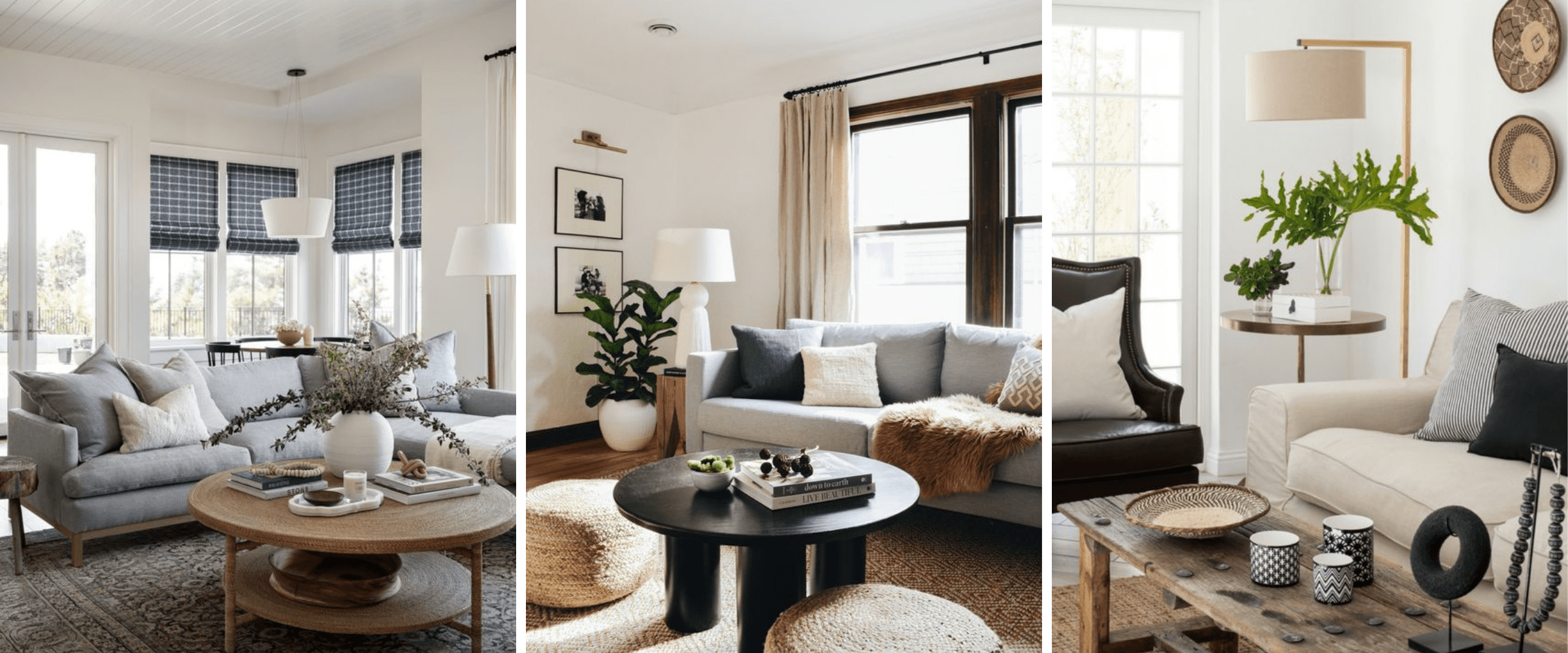
Images via Pinterest.
Spatial Layout and Flow
Picture this: you step into a room, and there’s a sense of ease and harmony. You effortlessly move through the space, feeling a natural flow that invites relaxation and peace. That, my friends, is the power of thoughtful spatial design.
A cluttered and chaotic space can be overwhelming, triggering stress and unease within us. On the other hand, a well-organized and thoughtfully arranged room promotes a sense of calmness and tranquility. When designing your spaces, it’s essential to consider the flow of movement and how furniture placement can support a seamless, intuitive experience.
Imagine a living room where seating arrangements encourage conversation and connection. Placing sofas and chairs facing each other creates a cozy gathering space where people can engage in meaningful interactions. This fosters a sense of warmth and community, promoting positive emotions and a harmonious atmosphere.
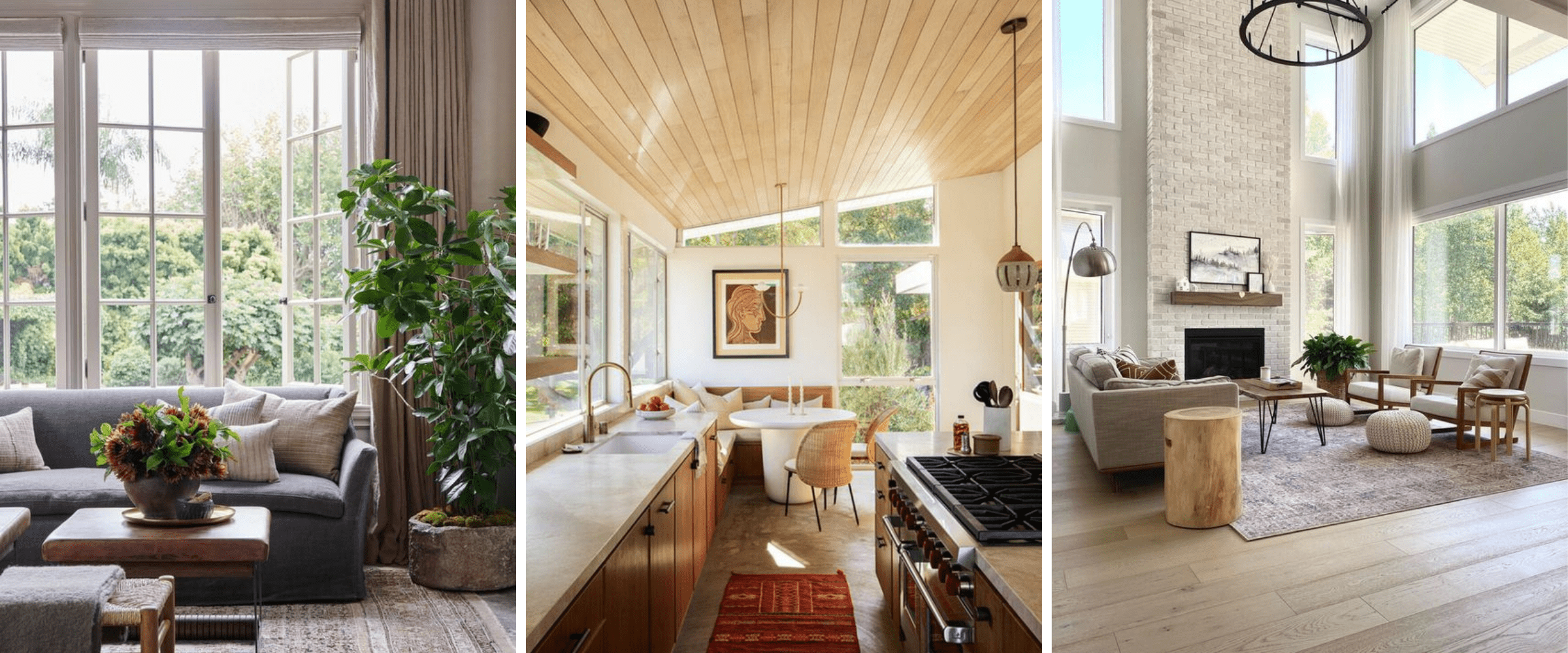
Images via Pinterest.
In areas where productivity is key, such as your home office or studio, consider an efficient layout that optimizes functionality. Arrange your desk and workspace in a way that allows for smooth workflow, reducing distractions and enhancing focus. A well-designed workspace creates an environment that supports whatever endeavors you take on and helps you achieve your goals with ease.
But spatial layout isn’t just about the arrangement of furniture—it’s about creating an overall sense of flow throughout your entire home. When transitioning from one room to another, give some thought to the visual and physical journey. Can you create pathways that guide your movement effortlessly? Are there areas where you can introduce open spaces or allow natural light to filter through, creating a sense of continuity and connection?
By consciously designing spaces that promote flow, you can create an environment that supports positive emotions and a sense of well-being. The seamless movement from one room to another creates a sense of unity, allowing your homes to feel like cohesive, harmonious sanctuaries. Who doesn’t want that?
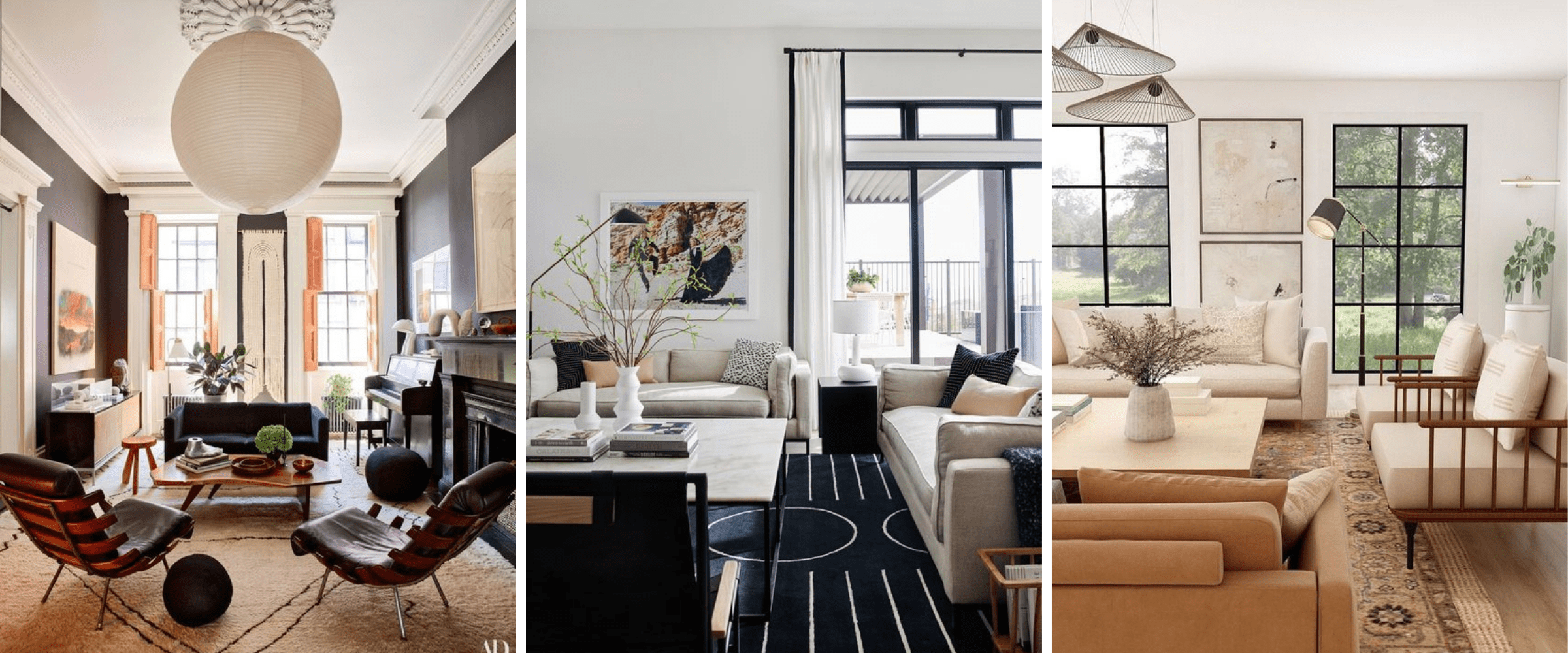
Images via Pinterest.
Texture and Sensory Experience
Texture is the tactile language of design. It has the incredible power to evoke emotions, create depth, and engage our senses in ways that words cannot describe.
Texture has the remarkable ability to elicit specific emotions within us. Soft and plush textures, like a cozy throw blanket or a luxurious velvet sofa, envelop us in a comforting embrace, evoking feelings of warmth and relaxation. They invite us to unwind, snuggle up, and find solace within our surroundings.
On the other hand, rough and textured surfaces, such as exposed brick walls or hand-carved wooden furniture, bring a touch of excitement and feeling of movement to a space. These textures add visual interest and create a sensory experience that ignites our curiosity and captivates our senses. For example, they infuse a room with a sense of energy and intrigue.
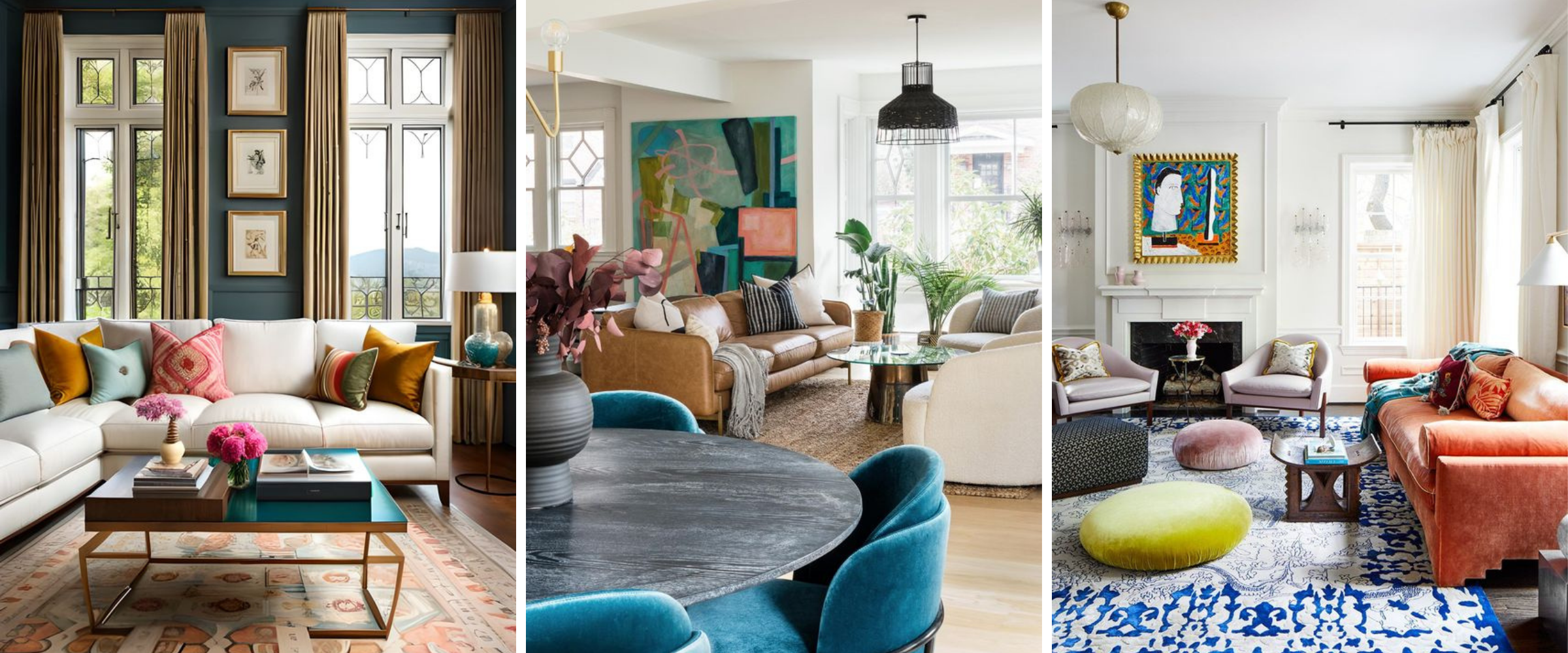
Images via Pinterest.
The key is finding the right balance of textures within a space. Too much softness can make a room feel one-dimensional, while an abundance of rough textures can become overwhelming quickly. By artfully combining different textures, you can create a visually captivating and engaging environment that enriches your mood and charms your senses.
Imagine stepping into a room with a plush, shaggy rug under your foot, smooth velvet curtains adorning the windows, and a rustic wooden coffee table that adds a touch of rugged charm. The juxtaposition of these textures creates a visual and tactile symphony. And it offers a multi-dimensional experience that delights your senses and evokes a range of exciting emotions.
When it comes to incorporating texture into your home, think beyond the visual. Consider the textures you interact with on a daily basis—textures you can touch, feel, and experience. Embrace these sensory elements that engage your sense of touch, such as soft pillows, smooth ceramics, or woven textiles. These elements not only enhance the aesthetic appeal of a room but will also enrich your emotional connection to your surroundings.
But texture is not limited to fabrics and materials alone. Texture can also be visual. It can be created through patterns, such as geometric prints or intricate tile designs. These visual textures also add depth and character to a space, evoking a sense of interest and intrigue.
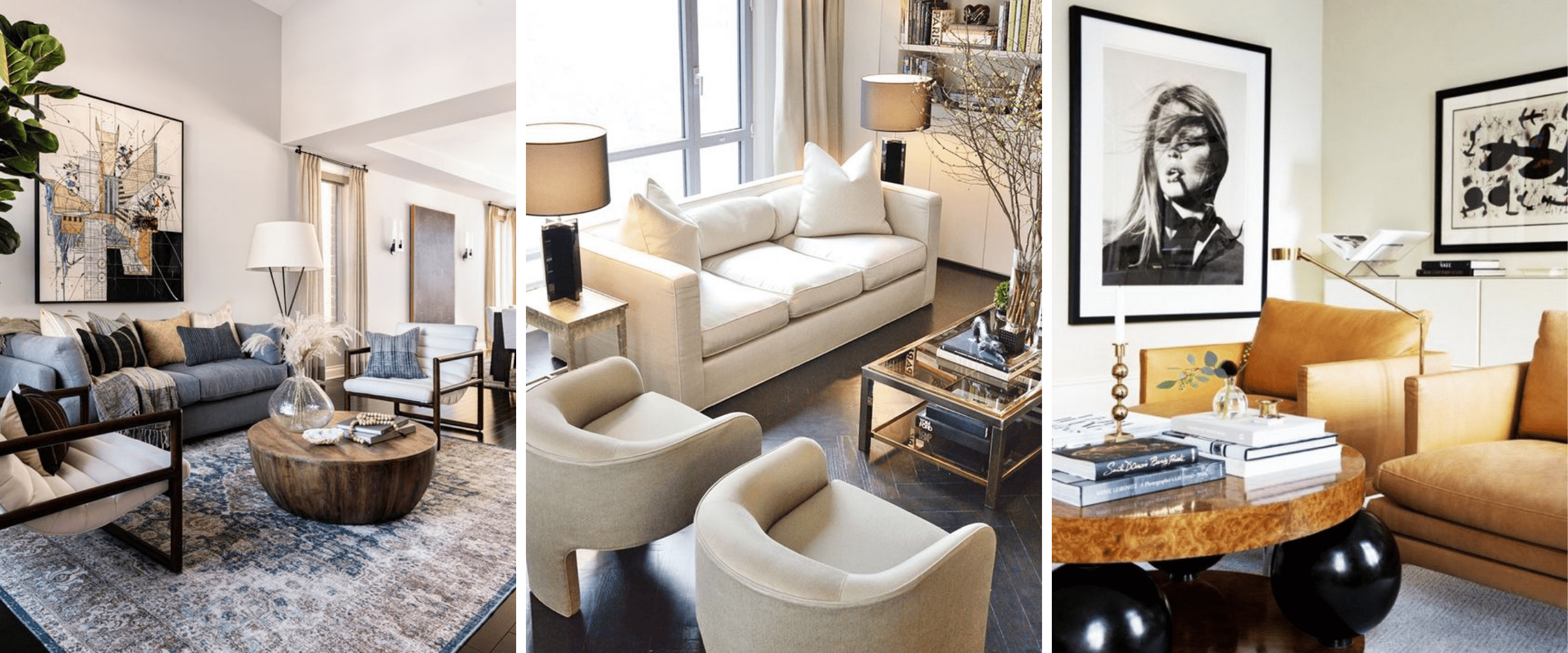
Images via Pinterest.
Personalization and Emotional Connection
Our homes should be more than just beautifully designed shells; they should be a reflection of who we are, our values, and the stories we hold dear.
When we infuse our living spaces with personal touches, cherished mementos, and meaningful artwork, we create an environment that resonates with our soul. These pieces, carefully curated and thoughtfully placed, become windows into our lives, inviting us to reminisce, connect, and experience a sense of belonging within our own homes.
Personalization allows us to establish a deep emotional connection to our surroundings. When we enter a room filled with items that hold sentimental value, a flood of memories, emotions, and comfort washes over us. It’s like being wrapped in a warm embrace, enveloped in a space that understands and nurtures our spirit.
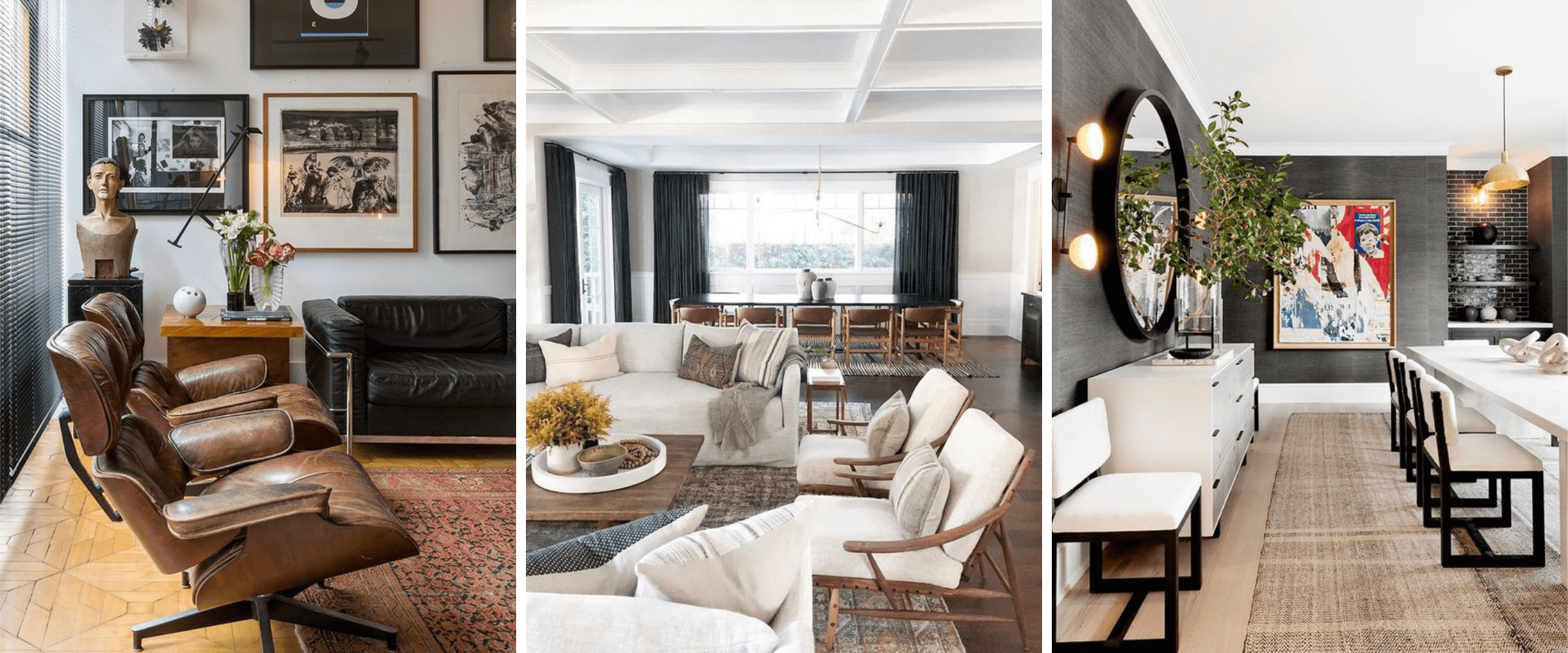
Images via Pinterest.
Think of the artwork adorning your walls, each piece telling a story and evoking emotions within you. Or the treasured heirlooms passed down through generations, connecting you to your heritage and instilling a sense of pride and belonging. These personal elements anchor us, grounding us in the present while reminding us of our journey and the people and experiences that shape us.
When we personalize our spaces, we are inviting our authentic selves to shine through. We create an environment that reflects our personality, passions, and values. This authenticity is a balm for the soul, providing a sanctuary where we can truly be ourselves—a space that supports and celebrates who we are.
But personalization is not limited to sentimental items alone. It extends to the choices we make in our design, from the color palettes that resonate with our spirit to the furniture styles that speak to our unique taste. By infusing your personal preferences into the design process, you get to create a home that is a true extension of yourself.
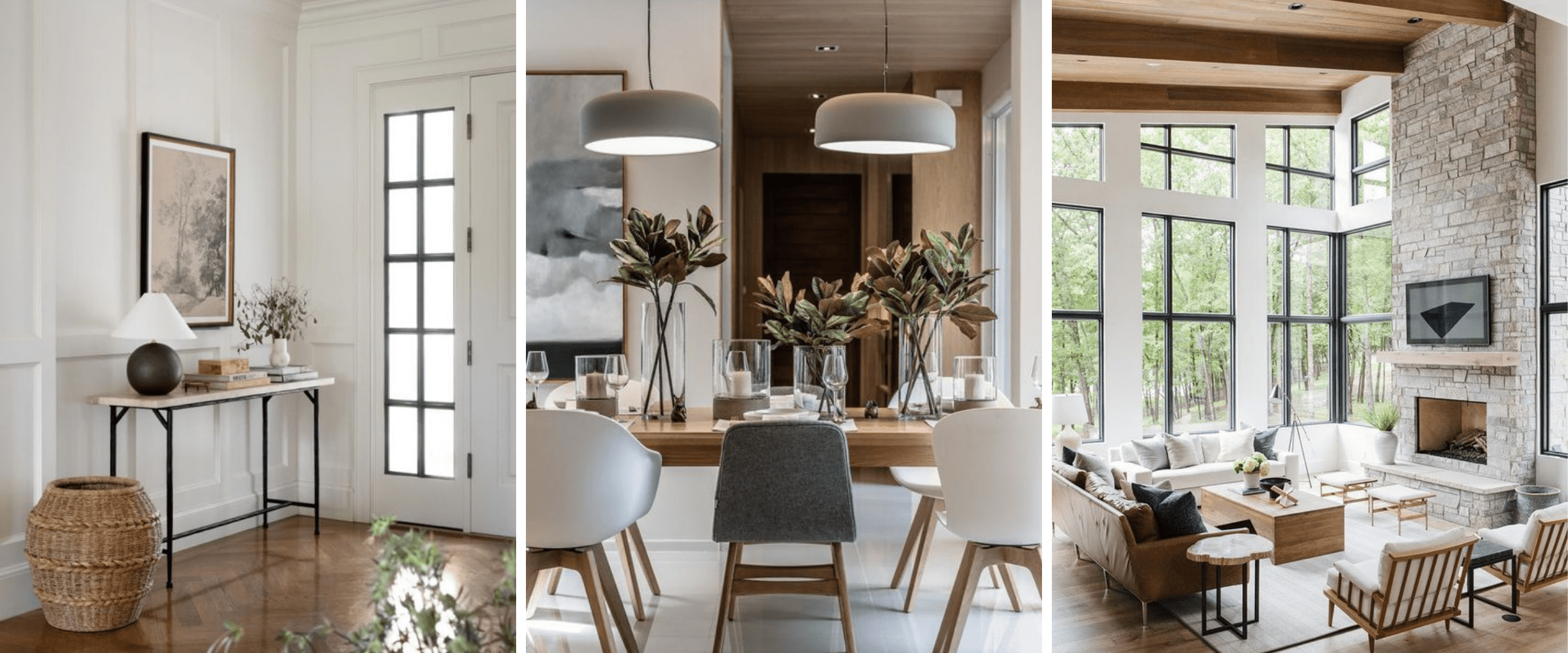
Images via Pinterest.
Decluttering and Organization
Let’s now turn our attention to the transformative power of decluttering and organization—a practice that has a direct and a truly profound impact on your mood and overall well-being.
Imagine this: a space where everything has its place, where visual chaos is replaced with serenity, and where a sense of calmness washes over you as you enter that space. That, my friend, is the magic of decluttering and organization.
Clutter is more than just a physical mess; it weighs on our minds and hinders our ability to find peace and clarity. When our spaces are cluttered, our thoughts become cluttered as well. We feel overwhelmed, stressed, and unable to fully focus. It’s no wonder that decluttering has become a therapeutic practice—a way to restore order and create a sense of calmness in our lives.
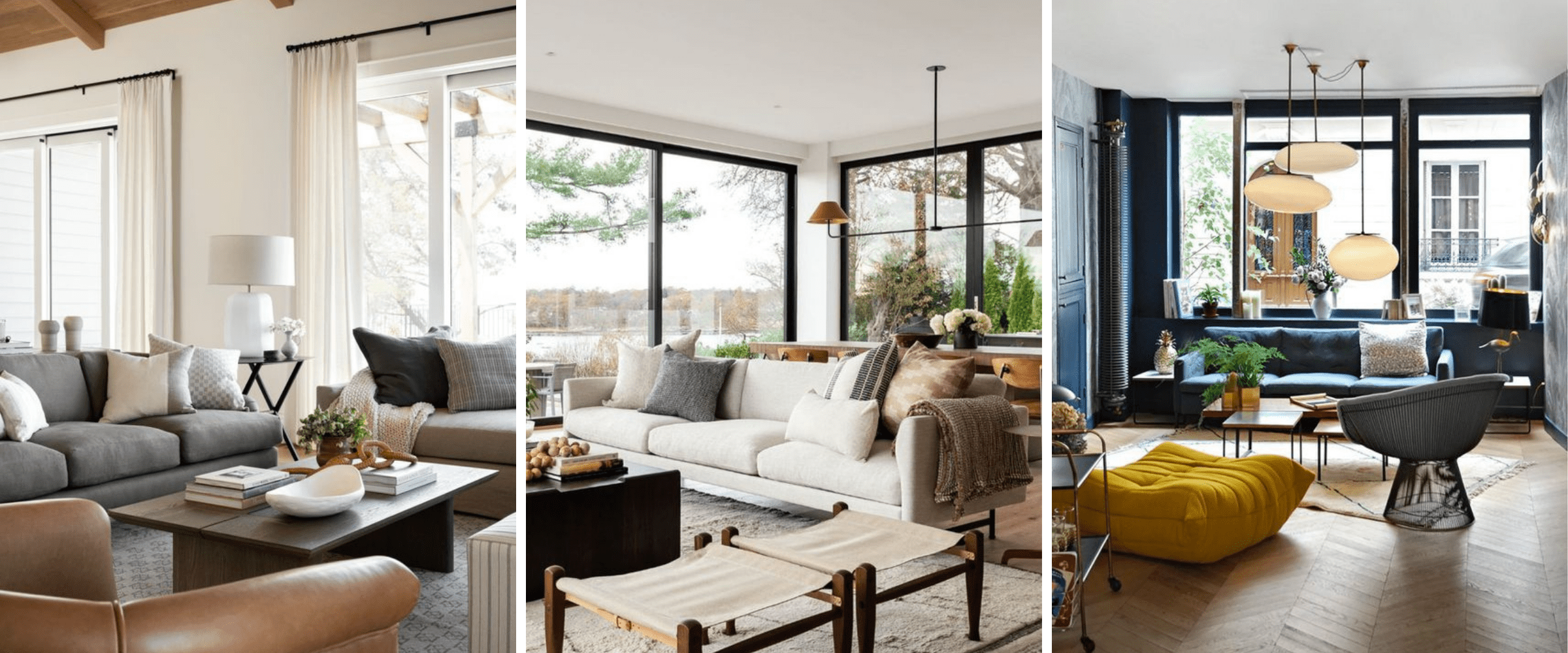
Images via Pinterest.
By intentionally decluttering your spaces, you can create room for your mind to breathe. You can let go of the excess and make space for what truly matters. It’s about curating your environment, ensuring that each item has a purpose and brings you joy, like Marie Kondo says. Decluttering is a process of editing—mindfully making choices that allow us to create a space that supports your emotional well-being.
But decluttering is just the first step. Once we have cleared away the physical chaos, it’s time to introduce the transformative power of organization. A well-organized space not only looks visually appealing but also promotes a sense of ease and serenity. When your belongings have designated places and you have systems in place, you can navigate your environment with efficiency and a peace of mind. I can’t emphasize this point enough.
Explore storage solutions that align with your design aesthetic—beautiful baskets, stylish containers, and clever shelving systems. By incorporating these elements, you can elevate the act of organization from mundane to an art form—a deliberate and creative process that brings delight to your everyday life.
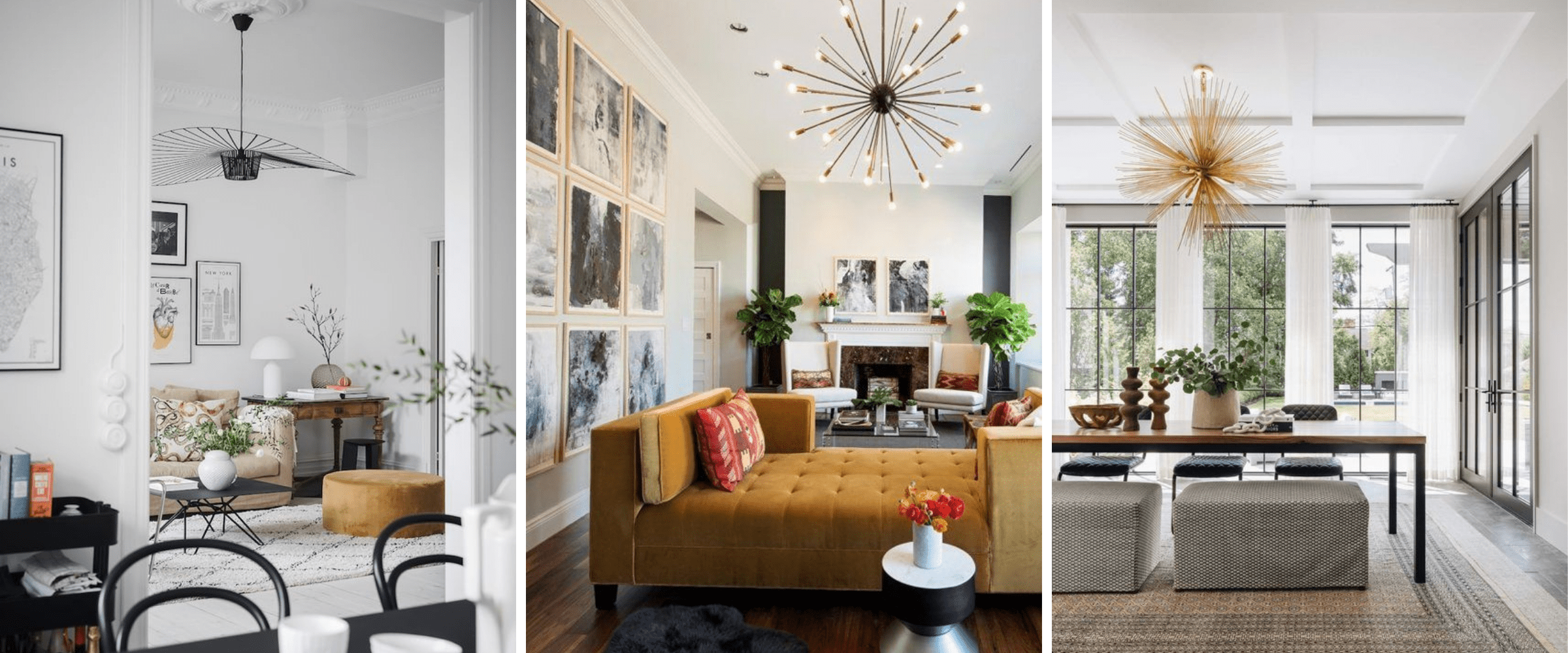
Images via Pinterest.
Nature and Biophilic Design
I will not lie to you, friend, but there was a time that I didn’t want to have any plants in my home. It started with my first place on my own where I had purchased a plant that had all kinds of creepy crawlies in it unbeknownst to me! Ever since I discovered centipedes and other bugs crawling all over my floor a few days later, I was done with plants.
I’m happy to tell you, since then I have learned how to select plans that aren’t infested with bugs and how to treat them if I discover bugs in them later on. Phew…thank goodness, because in the last 20 years or so I have really gained an appreciation for greenery in my space and what it does for my mental health.
Imagine your space enveloped in the calming embrace of lush greenery, with sunlight streaming through the windows, and the gentle sound of flowing water in the background. Sounds magical, right? That is the magic of biophilic design. That’s also why this is one of those design trends that is here to stay.
Nature, with all its magnificence, has an undeniable influence on our well-being. That’s why the sight of a majestic landscape, the touch of a soft breeze, the scent of blooming flowers—all these elements evoke feelings of joy, tranquility, and rejuvenation.
Biophilic design aims to harness this power and integrate nature into our built environments, creating spaces that nourish our souls and enhance our emotional well-being.
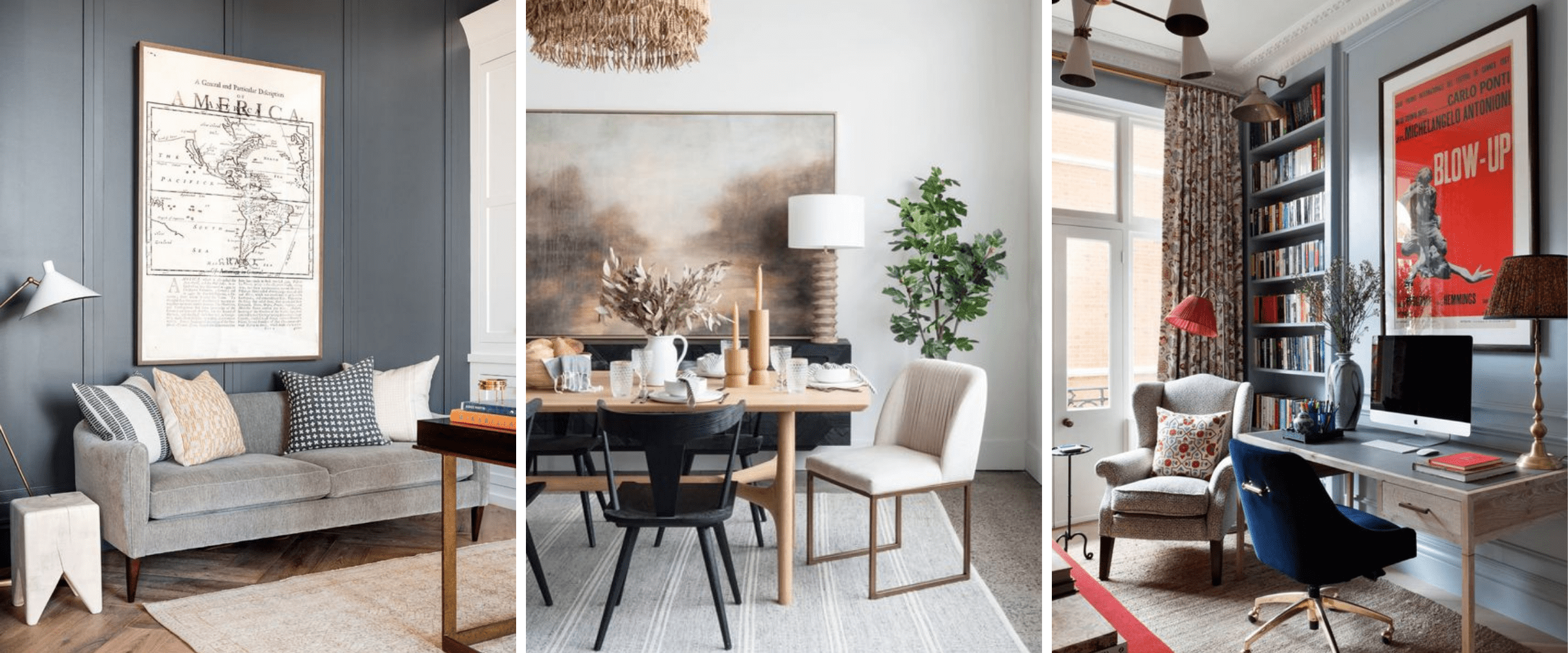
Images via Pinterest.
One of the fundamental principles of biophilic design is incorporating natural elements into our living spaces. This can be done through the introduction of plants, natural light, organic materials, and even water features. By bringing nature indoors, you can create an environment that rejuvenates your spirits and uplifts your mood.
Plants are the living, breathing essence of biophilic design. They not only add a touch of natural beauty but also purify the air, increase humidity, and reduce stress. Lush green foliage instantly invigorates a space, creating a sense of vitality and connection to the outdoors. So, embrace the power of plants, and let them breathe life into your home.
I know we covered the importance of natural light in the lighting section above, but it’s also a crucial element of biophilic design. Sunlight is a potent source of energy and positivity, boosting your mood, enhancing your vitamin D levels, and regulating your circadian rhythms.
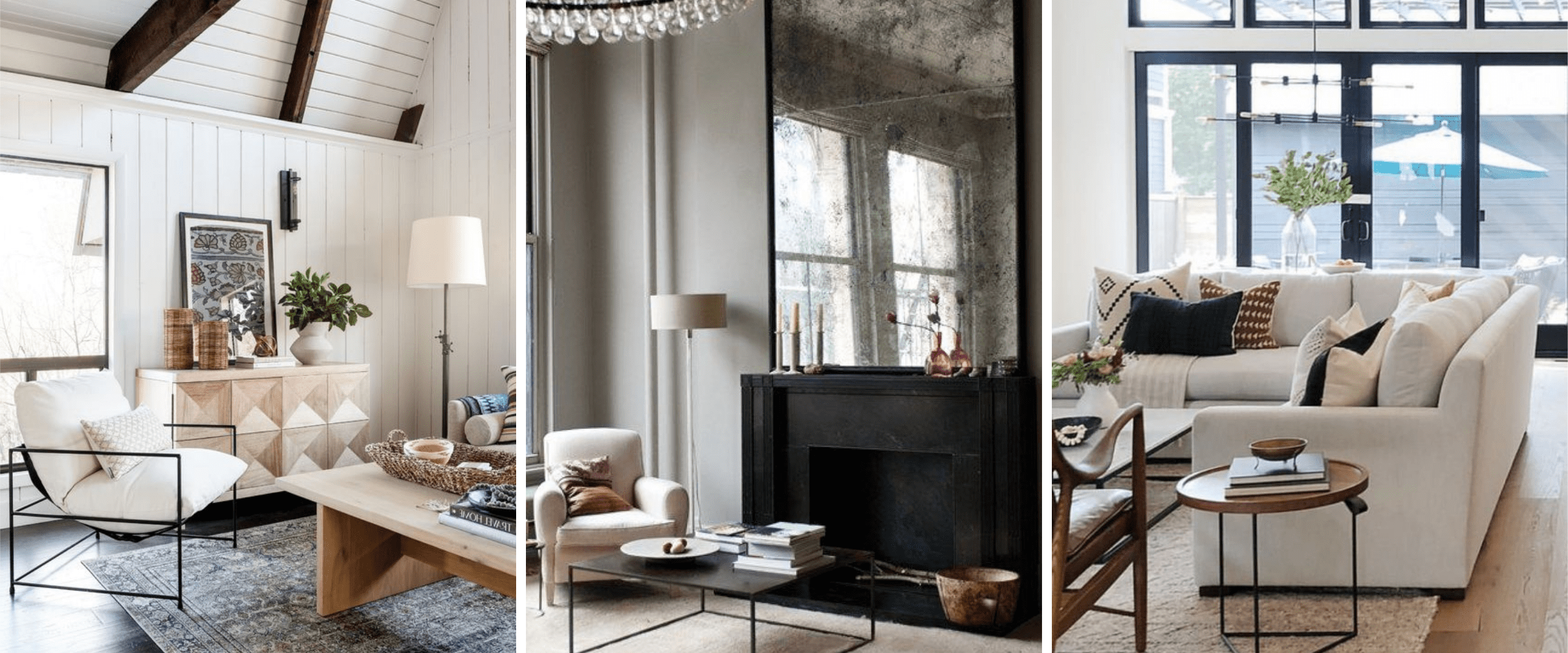
Images via Pinterest.
So, maximize natural light in your spaces—unveil those windows, pull back the curtains, and let the sun’s rays flood in. It’s a simple yet profound way to create a connection with the outdoors and infuse your home with a sense of vitality and harmony.
Organic materials also have an undeniable appeal. Wood, stone, and natural fibers bring a sense of warmth, texture, and authenticity to a space. They evoke a connection to the earth, reminding us of our roots and grounding us amidst the fast-paced world we live in. Incorporate these materials into your design—be it in flooring, furniture, or decorative elements—and let their natural beauty enrich your surroundings.
Water, in its various forms, also has a remarkable effect on our well-being. The sight and especially the sound of flowing water creates a soothing, meditative ambiance that calms our senses and washes away stress. Incorporating water features, such as fountains or indoor ponds, into your design will infuse your space with a sense of serenity and tranquility.

Images via Pinterest.
Interior design is not just about creating visually appealing rooms; it is a journey of self-discovery, a practice of curating environments that nourish our souls and uplift our spirits.
Whether you’re revamping an entire home or simply refreshing a single room, approach the process with curiosity, creativity, and an open heart. Take the time to understand your own preferences, desires, and the emotions you want to evoke within your space. Seek inspiration from the world around you, from nature’s beauty to art, literature, and the stories of your own and others.

